Cassini Spacecraft Photos Reveal the Secrets of Saturn's Strangest Moons
Hyperion
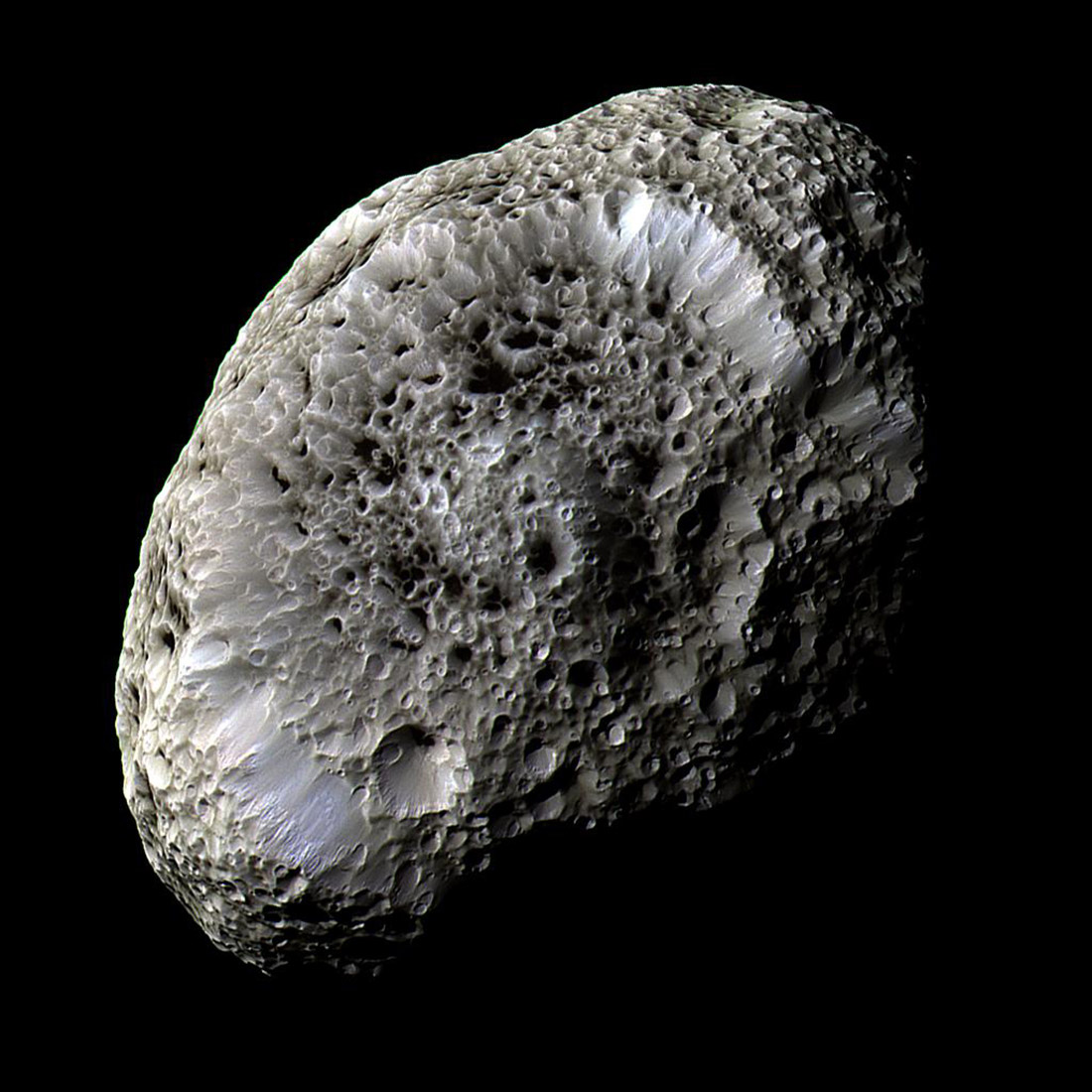
Saturn's moon Hyperion is the largest of the planet's irregular, non-spherical moons. Nearly every inch of its surface is covered in craters, causing it to look like a jagged, gray sea sponge. Hyperion is also less dense than water, and is thought to contain porous pockets of water ice. The view was obtained during Cassini's close flyby on Sept. 26, 2005.
Scars on Hyperion

Hyperion looks as though it has a long history of collisions with small bodies. It also rotates chaotically in its orbit, "tumbling unpredictably through space," according to NASA.
Hyperion, along with its sister moons Phoebe and Iapteus, all bear signs of past collisions. The gravity of Saturn can smooth out the surface of a cratered moon over time, but these are three of Saturn's most distant moons, which is partly why their scars remain.
Cassini captured this image on Aug. 25, 2011.
Dione
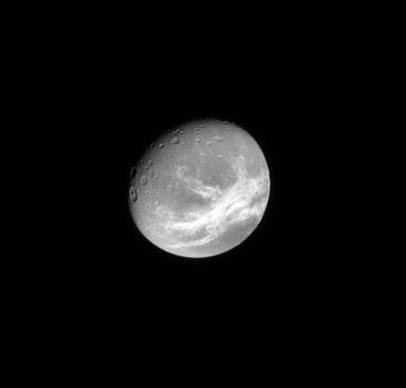
Saturn's moon Dione is notable for the "wispy" features that stretch across its surface. These are fractured areas that stretch for up to tens or hundreds of miles, cutting across plains and craters, according to NASA.
These fractures create deep ice canyons (some of them are several hundred meters high), that appear lighter because the fracturing causes the darker surface material to fall off, revealing light-colored water ice underneath. These could be similar to the "stripes" on Saturn's moon Enceladus.
Dione, Up Close
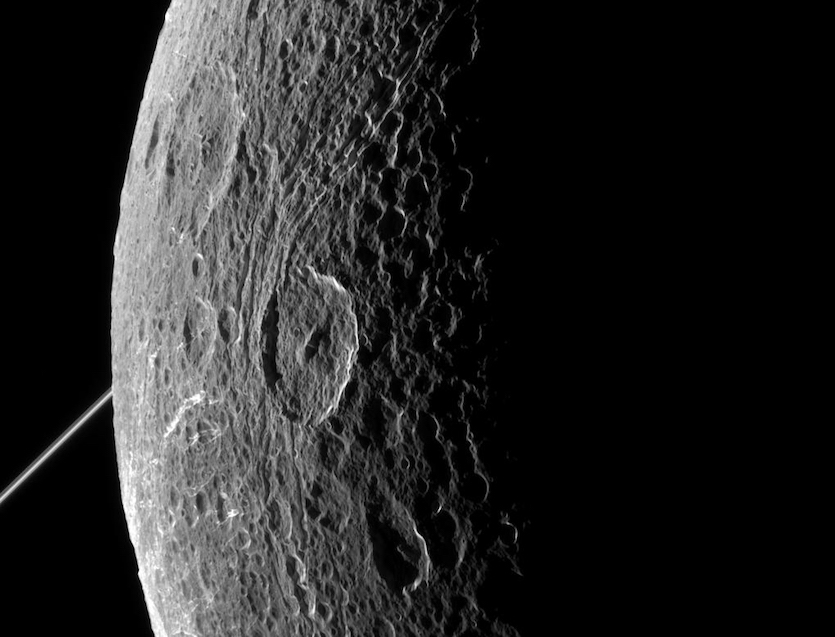
Dione's surface was seen in detail by the Cassini spacecraft during a flyby in June 2015.
Dione and Rhea
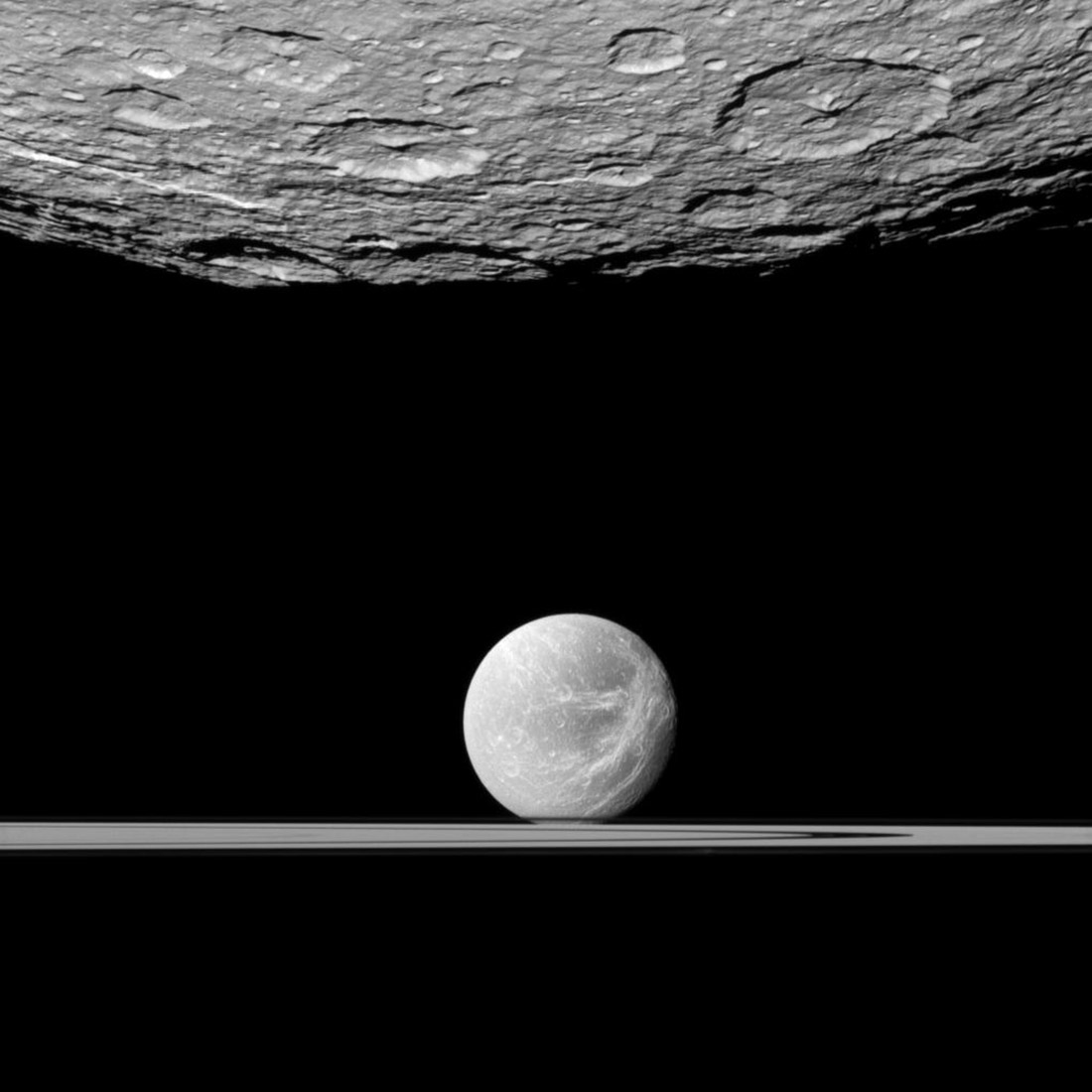
The Cassini spacecraft captures a far-off look at the wispy features on the surface of Dione, with the cratered moon Rhea taking up the top half of the image. Saturn's rings are also visible.
Mimas
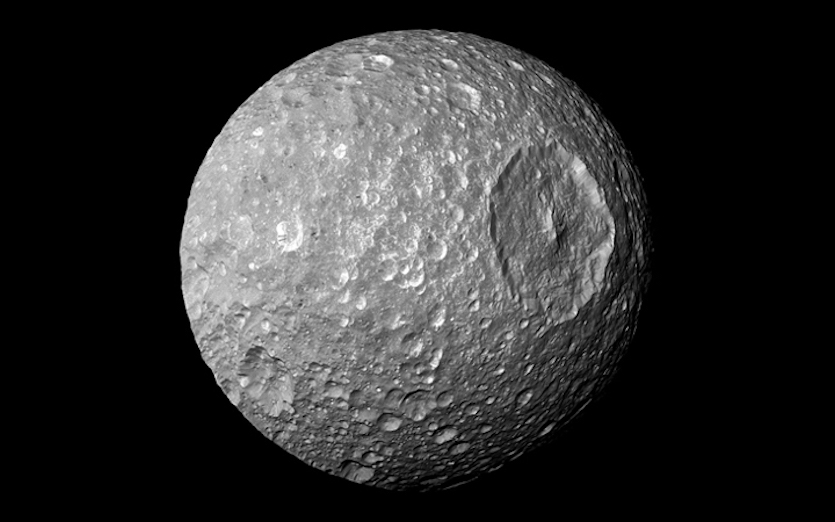
Saturn's moon Mimas bears more than a small resemblance to the fictional Death Star from the Star Wars Universe. The moon's most distinct surface feature is the enormous Herschel Crater, which is 80 miles (130 km) across, or about one-third of the diameter of the moon itself.
The Great Crater
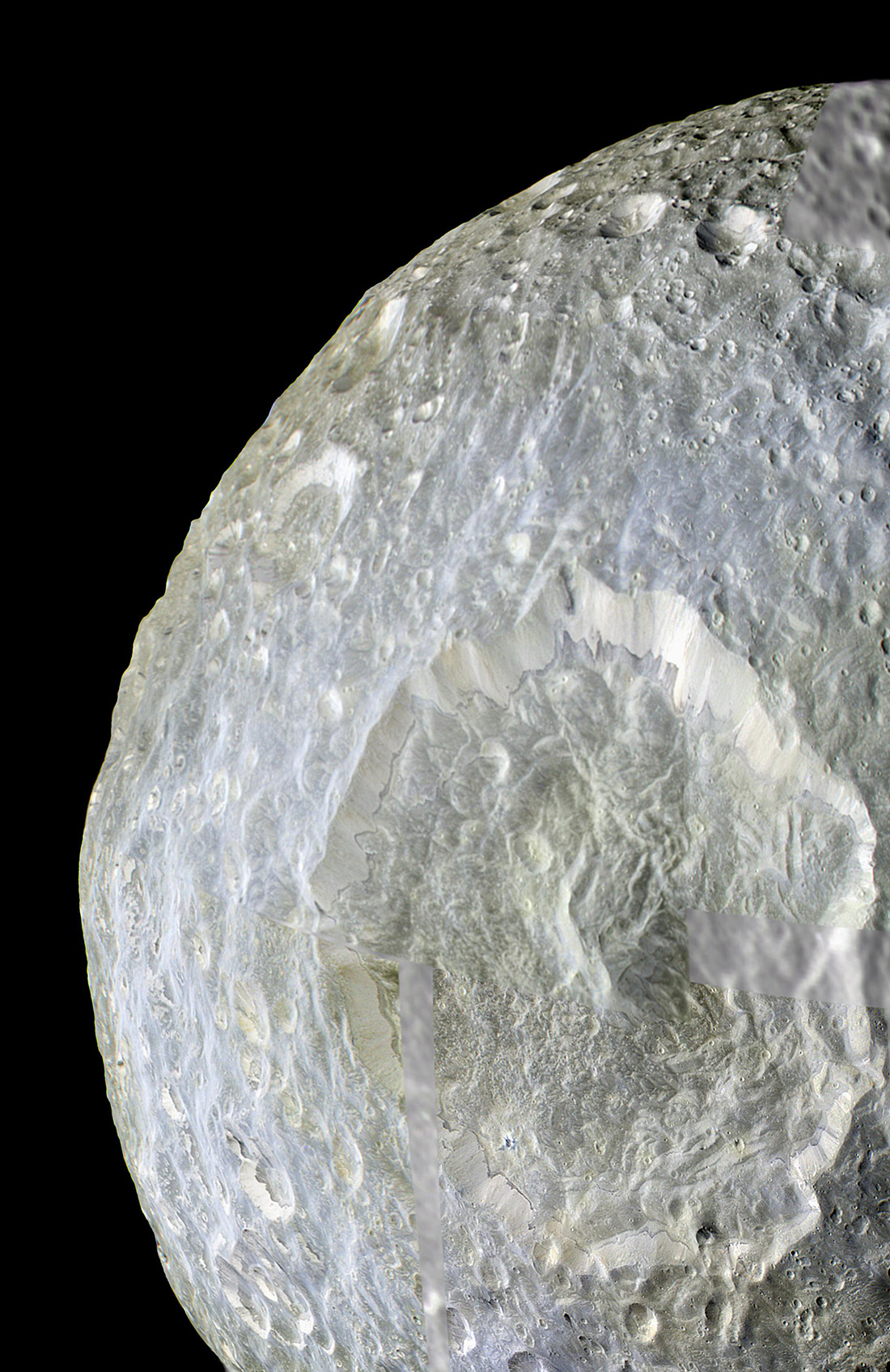
Subtle color differences on Saturn's moon Mimas are apparent in this false-color view of Herschel Crater captured in 2010 during NASA's Cassini spacecraft on its closest-ever flyby of that moon.
Follow Calla Cofield @callacofield. Follow us @Spacedotcom, Facebook and Google+.
Get the Space.com Newsletter
Breaking space news, the latest updates on rocket launches, skywatching events and more!
Join our Space Forums to keep talking space on the latest missions, night sky and more! And if you have a news tip, correction or comment, let us know at: community@space.com.

Calla Cofield joined Space.com's crew in October 2014. She enjoys writing about black holes, exploding stars, ripples in space-time, science in comic books, and all the mysteries of the cosmos. Prior to joining Space.com Calla worked as a freelance writer, with her work appearing in APS News, Symmetry magazine, Scientific American, Nature News, Physics World, and others. From 2010 to 2014 she was a producer for The Physics Central Podcast. Previously, Calla worked at the American Museum of Natural History in New York City (hands down the best office building ever) and SLAC National Accelerator Laboratory in California. Calla studied physics at the University of Massachusetts, Amherst and is originally from Sandy, Utah. In 2018, Calla left Space.com to join NASA's Jet Propulsion Laboratory media team where she oversees astronomy, physics, exoplanets and the Cold Atom Lab mission. She has been underground at three of the largest particle accelerators in the world and would really like to know what the heck dark matter is. Contact Calla via: E-Mail – Twitter









